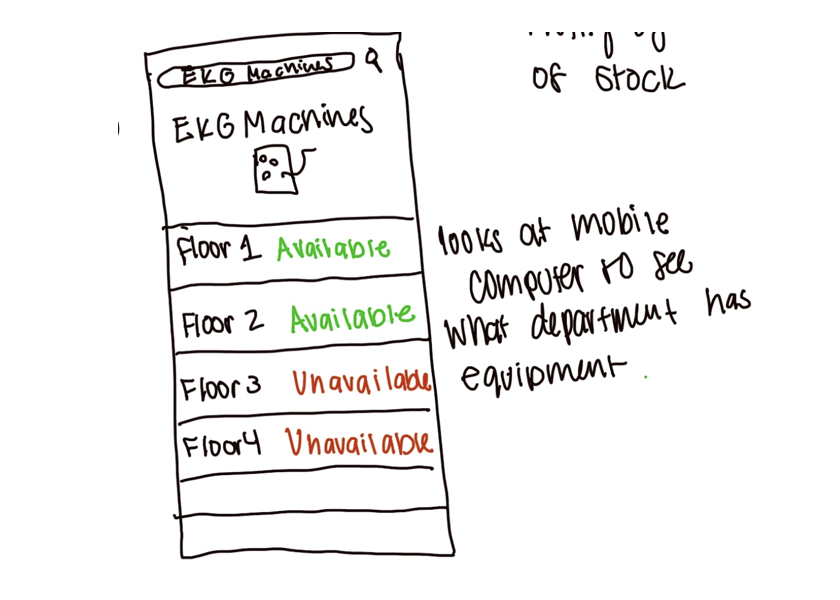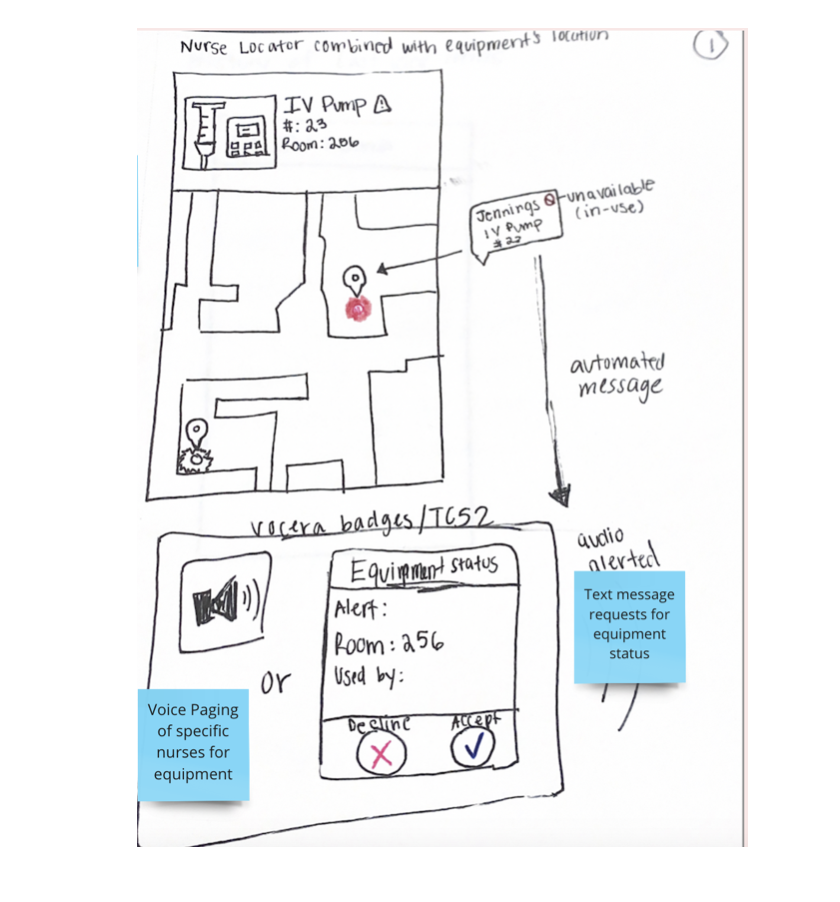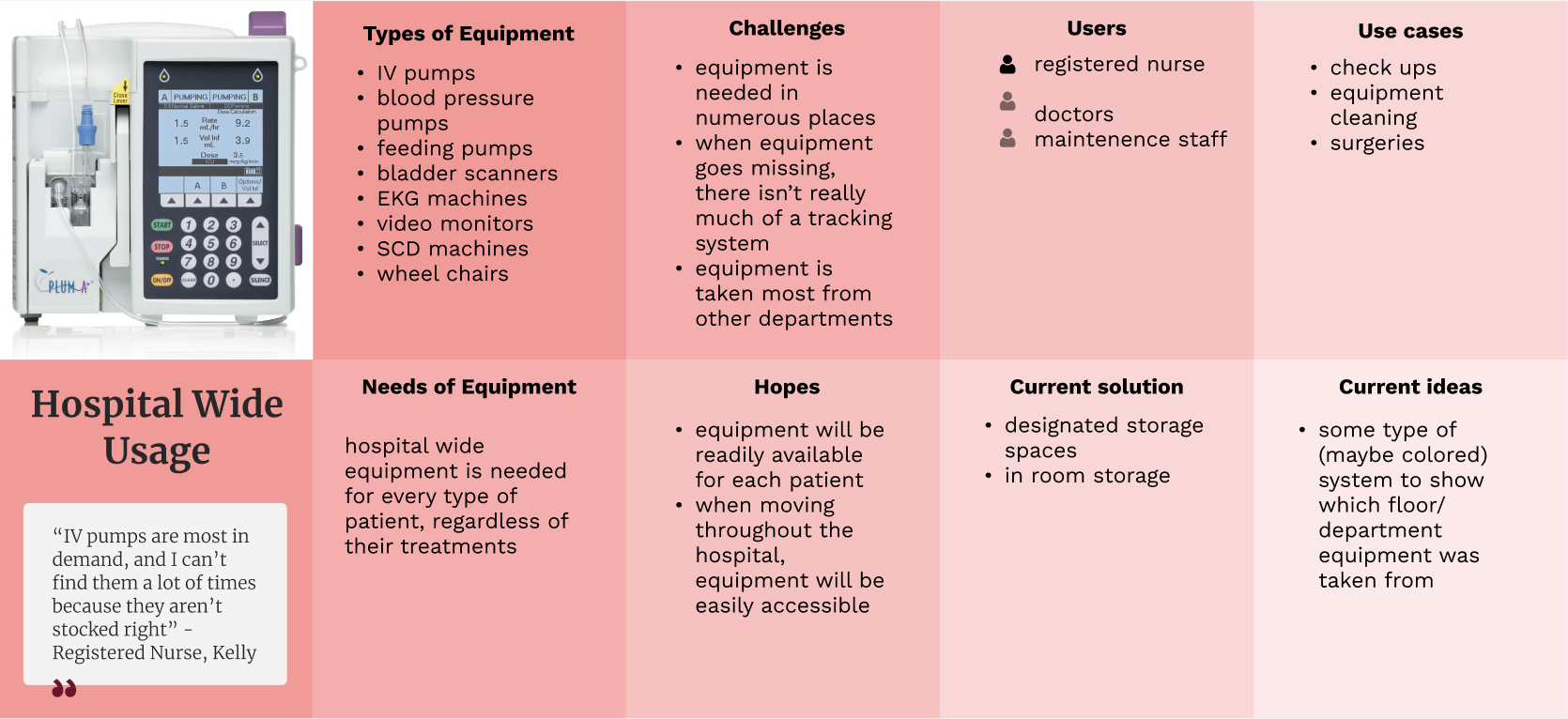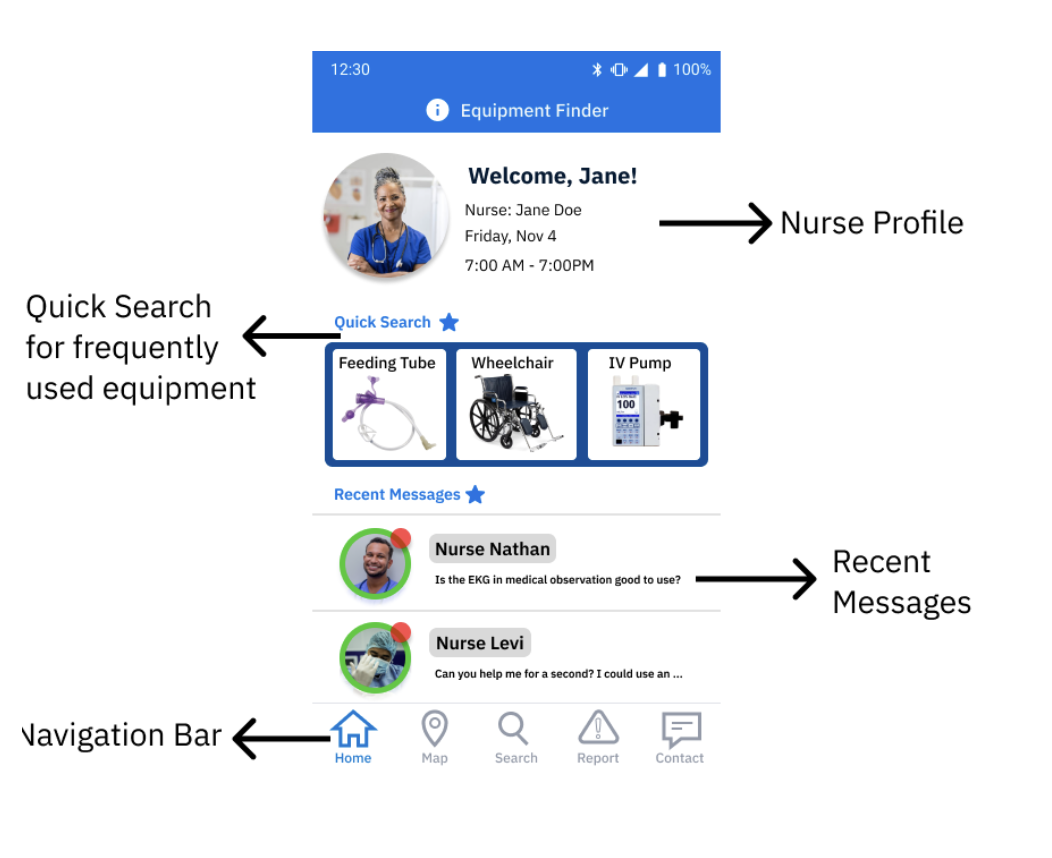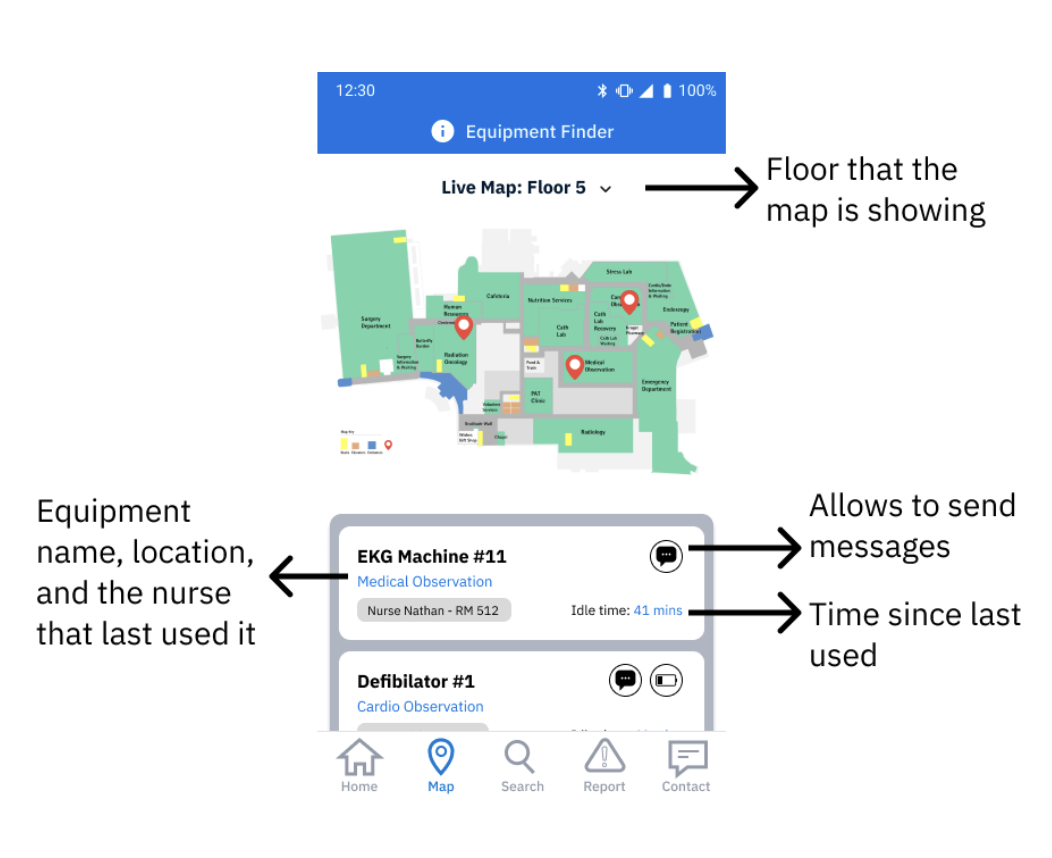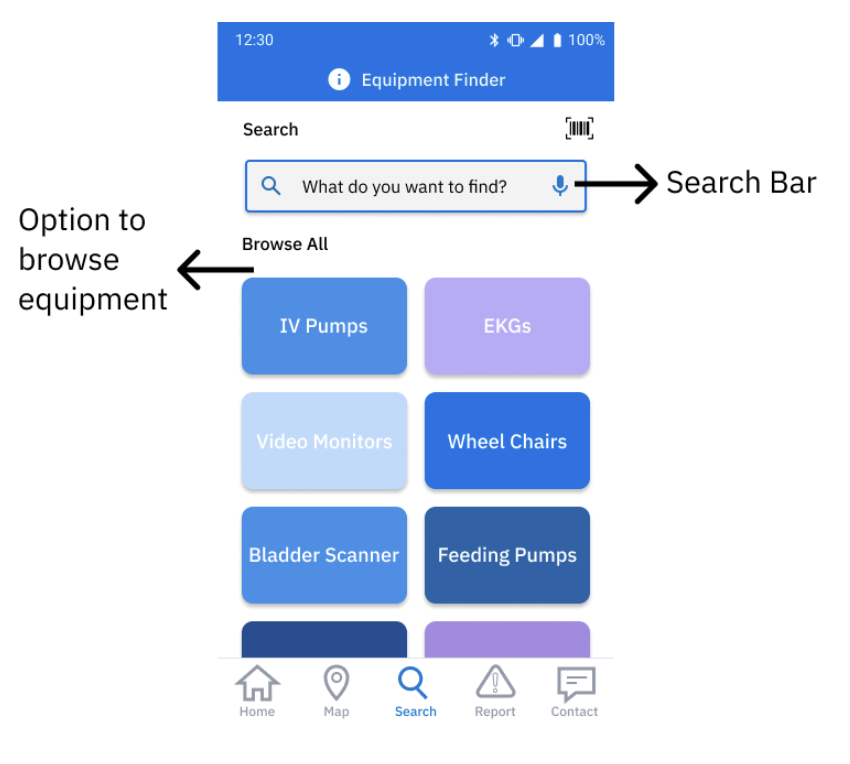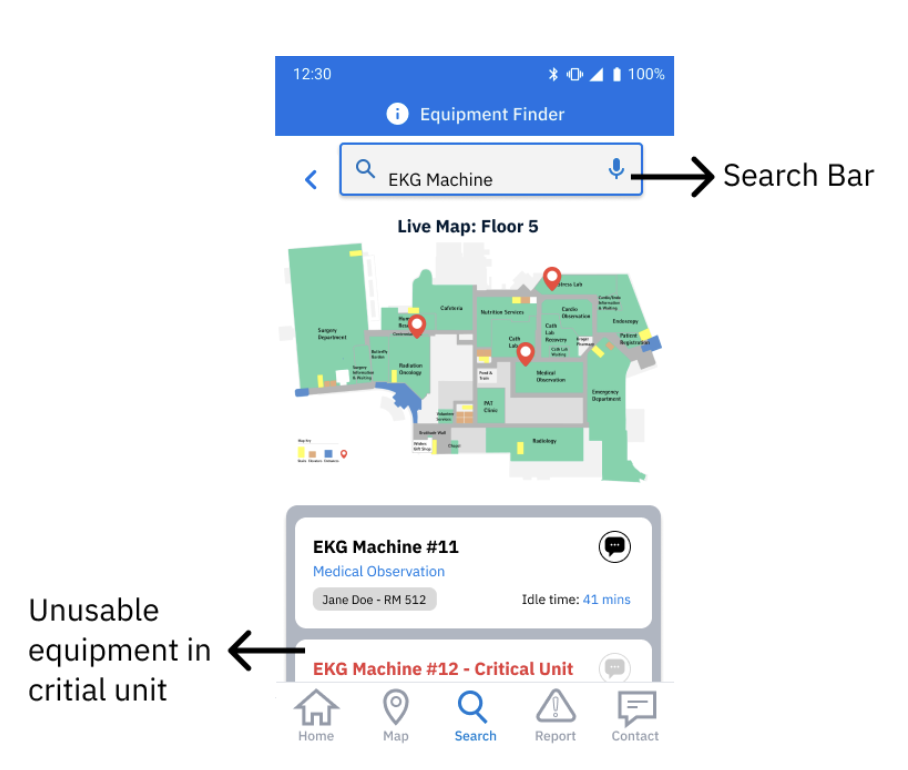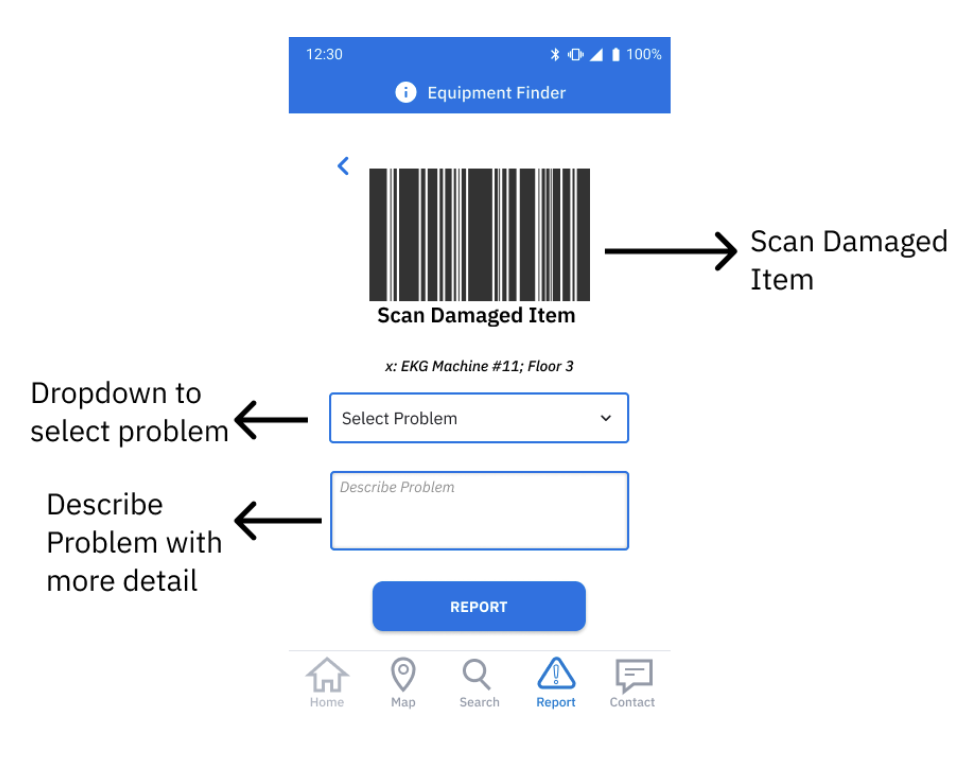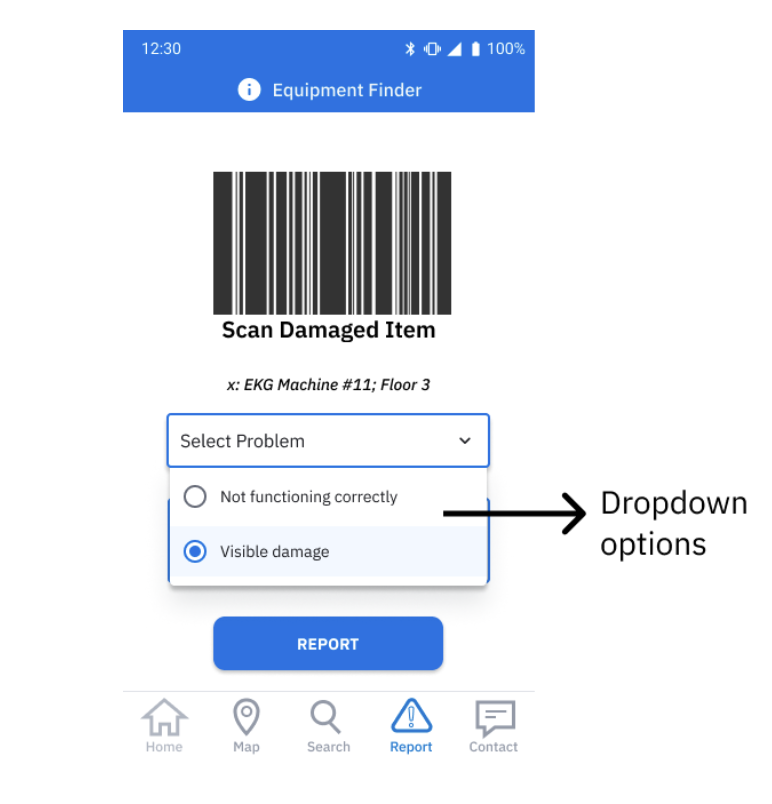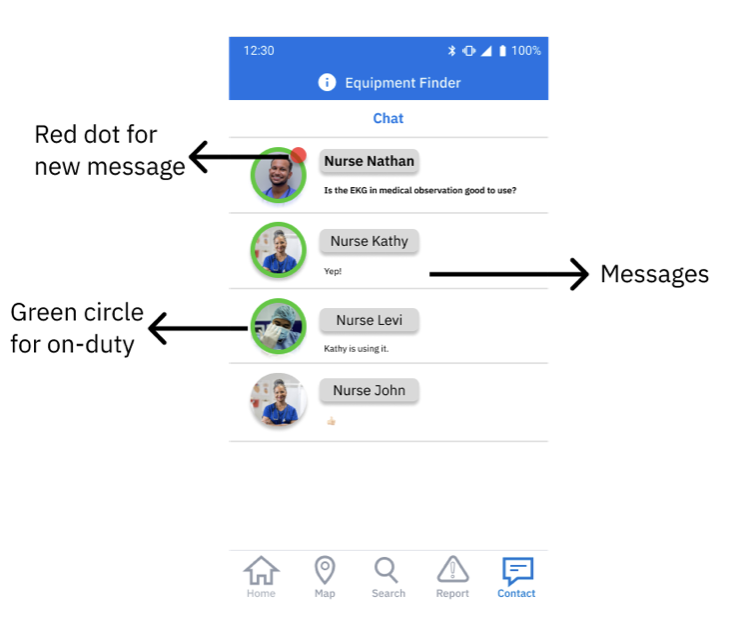Medical Equipment Tracking
Advocating for Nurse Practitioners and Hospital Staff to provide an effective method for tracking the location, maintenance, and availability of medical equipment.
Overview
Experience Mapping
Final Designs
Research
Ideation
Overview
The Challenge:
Medical equipment is one of the essential parts of efficient patient care. Finding medical equipment quickly is a struggle for nurses that do not have an effective tracking system
Hospital equipment needs to be easily located to ensure patients receive treatment in a timely manner. Some nurses resort to hoarding equipment, which only worsens the problem for other nurses.
Goals:
Navigate these issues and design a tracking system for Zebra to help nurses find equipment more quickly
Design the system to inform nurses of equipment status. This could mean knowing if the equipment is being used by someone else, being cleaned, or being repaired.
My role:
This was my first project in which research was the most prevalent part of the design process. I worked heavily on different forms of research. I conducted various interviews and spent numerous hours on secondary research over the problem space. I also worked on designing once we had moved into that step.
Research
What are the current methods for tracking equipment?
I interviewed a registered nurse and a traveling nurse. They both had differing experiences with equipment going missing, but ultimately claimed it was a very avid problem. They also said that communication within the hospital was typically by word of mouth. They each had work phones, but decided word of mouth was the primary format of communication.
Through our research, we were notified of various problems that exist among hospitals in regards to the general flow of the work. Below are the three topics our team chose to focus on when working through our project:
Organization
Nurses struggle to keep track of equipment as storage rooms are typically very unorganized
Time
Hospital staff spend so much time looking for equipment throughout a shift
Ideation
How can we display ideas as visualizations?
Our team started with sketching and preliminary ideation in order to visualize our design ideas.
Preliminary Ideation
Sketch of Equipment Floor Availability
Nurses are able to search for their desired equipment and quickly see if their desired equipment is available or unavailable on a specific floor.
Communication
There is not a consistent form of communication among hospital staff
After a lot of research on the various equipment types, our team realized that our research could have gone on forever and due to time constraints we needed to decide upon one category to further our focus within. We decided to focus on hospital-wide equipment, which is the type that I mapped for.
I specifically enjoyed learning about further information regarding hospital wide equipment as I learned from some of my interviews that this equipment is actually some of the easiest to misplace as it is so commonly needed. I wanted to gain more insight as to what this equipment consisted of, and who all came in contact with it throughout an experience.
Sketch of Live Map Equipment Floor Availability
Nurses are able to track the live location of moving and still equipment through a map. They are also able to see what nurse is using it at the moment.
Prototyping
1. Home Screen Mid-Fidelity
At the top of the home screen, there is a profile of the nurses who use the application. Next is a direct search box, by which we envision saving time in searching. Then, the bottom part of it is the section that shows the floor where the nurse is located and shows if storage is available and the corresponding live map, and at the bottom is information about other floors, which can be clicked to lead to other screens.
2. Live Equipment Map Mid-Fidelity
On this screen, it shows a live map of where the device is located. It still has a search box at the top to make it easy for nurses to find the corresponding device. It also provides more details at the bottom, such as the location and contact information for the last nurse who used it, and an idle time that tells the nurse how long it has been since they last used the device so they can know if it is available.
3. Storage Room Info Mid-Fidelity
This screen is for nurses to view the stock of the storage room. It still has a search box to help nurses quickly find the corresponding equipment. And it shows the details of where the machine is located at the bottom.
Areas for Improvement
After some concept testing with our previous interviewees and sponsor, we discovered a few pain areas in which we needed to iterate and improve upon in order to land on our final designs.
Features to add
location of storage rooms
pin points for items
personalized screens for users
direct messaging
item specific locations in rooms
Final Designs
Our team’s final designs for an equipment application
For our final design, our goal was to make a seamless and simple way for nurses to know exactly where equipment was located. We wanted our solution to add as little as possible to the already heavy workload of nurses. Designs are displayed in the carousel below:
Experience Mapping
How might we understand different types of equipment?
Our team divided up hospital equipment into seven different categories, then sketched some possible solutions for tracking each corresponding type. The category I focused working on was hospital-wide equipment.
Some of the ideas included color coordinated stickers for the equipment to store them, bar code stickers to track the items, physical stickers with each room having its own coordinated color system, which can be seen below:
Mapped out version of the hospital wide equipment
Sketching by Category
Potential tracking solutions for different types of equipment





